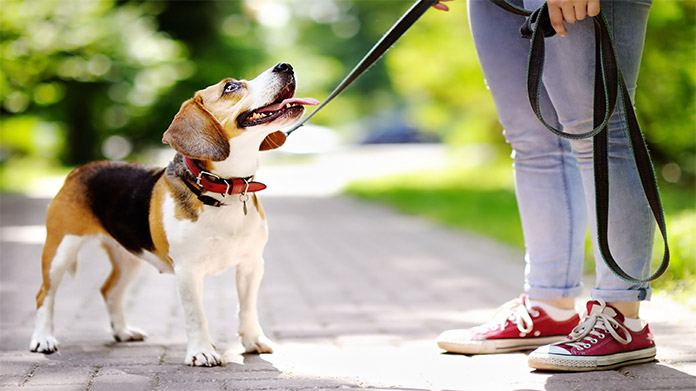Dog Walking
Dog Walking
Dog owners are often hardy types. New dog owners will soon find it natural to be out in all weathers and at all times of day walking their pet. Dogs need exercise, stimulation, play and training to remain healthy and happy throughout their lives.
The Benefits of Dog Walking
Dogs are great companions. They are usually loyal and friendly, asking for food, warmth and regular exercise in return. For their owner, this companionship translates into a more active lifestyle, potential weight loss and a host of associated lifestyle improvements. Both canine and human learn about bonding, control and the advantages of regular exercise.
Dogs can help unfit owners become fit, keep already active ones mobile and allow lonely people to find friends. Walking with a dog becomes a social event for both dog and owner, and allows the owner to test the dog’s training, introduce their pet to new experiences and situations as well as widening horizons for others who come into contact with the pair. Young children can learn how best to approach a dog, and when not to. Owners can work on socialising their dog with other dogs, cats and strangers. A walk provides a chance to practice training such as teaching the dog to sit, stay and recall to command, walk to heel with and without the leash and find or fetch a ball or other item.
The Responsibilities of Dog Walking
Walking a dog comes with responsibilities, however. Apart from the mere fact that exercising a dog is a requirement for the animal’s health, dog owners are usually required by law to clear up after their pet, bag it and dispose of it responsibly. Manual dexterity comes with time, as does a mental map of where the nearest poop bin is located on all regular routes.
It is also generally considered polite to keep a dog leashed when in a busy pedestrian location, so that it cannot bound up to the unwary. Not everyone appreciates being licked to death by an over-friendly dog, after all. Pavements are also better navigated with the dog on a lead on safety grounds.
The size of the dog will dictate how long the walk should be, and the route can be picked to include a dog-friendly park, field or beach if convenient for extra play time. Not all public spaces are dog-friendly, and owners should do their research before heading to a new location.
Once the basic benefits and responsibilities of dog walking have been established, both owner and dog can settle into a regular pattern of walks, training and playtime, exploration of new places and rediscovery of familiar locations. Walking a dog is often a time for the owner to reflect and regroup, clear their head, get some exercise and fresh air (or maybe indulge in a crafty cigarette or beer). And all because of the dog.



